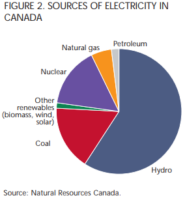Energy royalty trusts are a unique investment option within the energy industry that can provide regular income and potential tax advantages for investors. In this article, we will explore what energy royalty trusts are, how they work, their benefits and risks, and compare them to other investment options.
We will also examine case studies of both successful and failed investments in energy royalty trusts, as well as provide tips for investing in them. By the end of this article, you will have a better understanding of whether investing in energy royalty trusts is right for you.
Introduction to Energy Royalty Trusts
Energy royalty trusts are financial entities that own interests in oil, natural gas, or mineral properties and receive royalties from their production and sale.
These trusts allow individual investors to pool their money together and collectively invest in large-scale energy projects without bearing the direct costs or risks of exploration and production. By leasing their interests to operating companies, energy royalty trusts indirectly support the extraction and production of these resources.
They also offer an alternative financing option for oil and gas companies, providing upfront cash payments through leasing arrangements. This benefits both companies and investors by funding new projects or repaying debt while generating income for investors.
Energy royalty trusts provide individuals with a unique opportunity to participate in the energy industry and potentially earn passive income from valuable resources.
How Energy Royalty Trusts Work
Energy royalty trusts, as pass-through entities for tax purposes, operate by passing the income generated by the trust directly to investors. This means that investors report the income on their individual tax returns.
The primary source of income for these trusts comes from royalties received from operating companies in exchange for leasing their interests in oil, natural gas, or mineral properties. These royalties are typically based on a percentage of the revenue generated from the sale of these resources.
Investors in energy royalty trusts receive regular distributions of income from the trust. The amount of these distributions varies depending on factors such as production levels, commodity prices, and operating costs.
Unlike dividends from stocks or interest payments from bonds, the distributions from energy royalty trusts can fluctuate significantly over time. Fluctuations in production volumes and commodity prices directly impact the trust’s income and subsequently affect the amount distributed to investors.
It’s important to note that energy royalty trusts have a limited lifespan ranging from 20 to 30 years. Once the trust’s properties are depleted or become uneconomical to operate, it will be dissolved and its assets sold or distributed to investors.
In summary, energy royalty trusts offer investors an opportunity to participate in the income generated by leasing oil, natural gas, or mineral properties. By structuring themselves as pass-through entities for tax purposes, these trusts provide a direct flow of income to investors.
However, due to their dependence on production volumes and commodity prices, distributions can vary significantly over time. Nevertheless, energy royalty trusts remain an attractive investment option with a defined lifespan that ultimately leads to dissolution and distribution of assets once properties are no longer productive.
Benefits of Investing in Energy Royalty Trusts
Investing in energy royalty trusts offers several key benefits. Firstly, investors can enjoy regular income through distributions as long as there is ongoing production and sales from the trust’s properties. This provides a stable source of cash flow for passive income or portfolio diversification.
Secondly, energy royalty trusts offer potential tax advantages as they operate as pass-through entities. Investors report their share of the trust’s income on their individual tax returns, potentially benefiting from lower tax rates or deductions.
Lastly, investing in energy royalty trusts allows for diversification within the energy sector. By spreading investments across trusts with different resources or locations, investors can minimize risk exposure and take advantage of various market conditions.
[lyte id=’6ghLZdbpBWM’]


